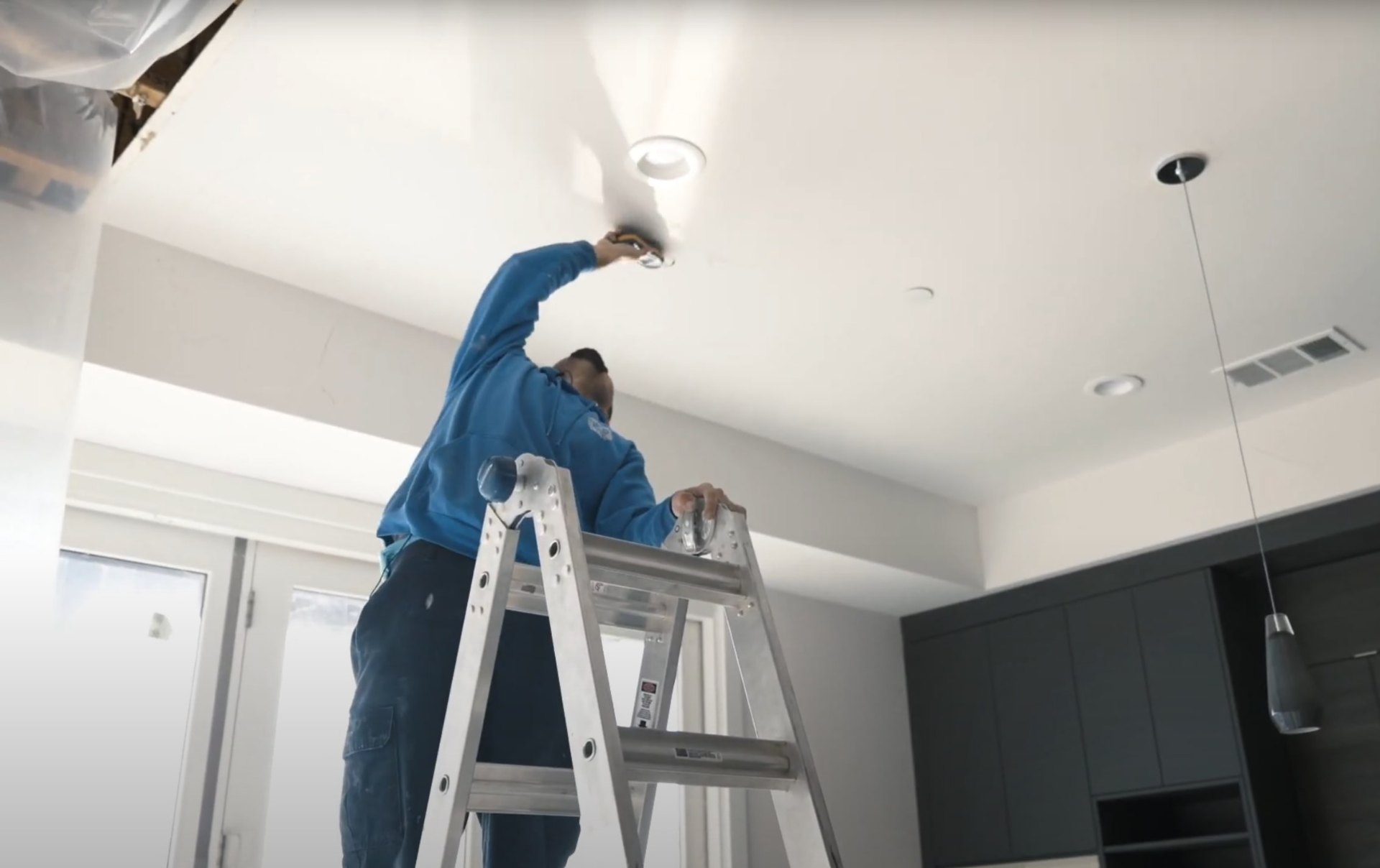Structural Drying & Dehumidification
Advanced moisture removal systems ensuring complete structural drying in St. Cloud, MN

Complete Moisture Removal Through Scientific Drying
After water extraction removes the bulk of standing water, the critical phase of structural drying begins. This process requires sophisticated equipment, scientific understanding of psychrometrics, and careful monitoring to ensure complete moisture removal from all building materials. St. Cloud Water Damage Restoration uses advanced commercial-grade air movers and dehumidifiers to create optimal drying conditions that prevent mold growth and structural damage.
Proper structural drying is both an art and a science. It requires understanding how different materials absorb and release moisture, how air movement affects evaporation rates, and how temperature and humidity interact to create ideal drying conditions. Our certified technicians are trained in the principles of psychrometrics – the study of air and moisture relationships – enabling them to create the most efficient drying environment for each unique situation.
The Science of Moisture Migration
Moisture doesn't just disappear on its own – it moves from wet materials into the air through evaporation, and this air must be continuously dried and circulated to maintain the drying process. When air becomes saturated with moisture, evaporation slows dramatically or stops entirely. This is why proper dehumidification is essential. The average home can contain over 2,000 gallons of water in building materials after significant flooding, and removing this moisture requires careful environmental control.
Different materials release moisture at different rates. Hardwood flooring may take several days to dry completely, while concrete can retain moisture for weeks without proper drying conditions. Drywall acts like a sponge, wicking moisture up from wet carpets and subflooring. Our technicians understand these material characteristics and position equipment strategically to address each material's specific drying requirements.
Professional Monitoring Equipment
- • Thermal imaging cameras for hidden moisture detection
- • Digital moisture meters for precise measurements
- • Psychrometers for humidity and temperature monitoring
- • Data loggers for continuous environmental tracking
Advanced Air Movement Systems
Air movement is crucial for effective drying. Our commercial air movers create powerful airflow patterns that accelerate evaporation by constantly moving saturated air away from wet surfaces and replacing it with drier air. We use a variety of air movers including axial fans for general air circulation, centrifugal fans for focused drying, and low-profile units for tight spaces under cabinets or furniture.
The positioning of air movers is critical to their effectiveness. Simply placing fans randomly around a room won't create optimal drying conditions. Our technicians create strategic airflow patterns that ensure air circulation reaches all affected areas, including inside wall cavities when necessary. A typical water damage restoration project might require 15-20 air movers per 1,000 square feet to achieve industry-standard air changes per hour.
Commercial Dehumidification Technology
Dehumidifiers remove moisture from the air, creating the low-humidity environment necessary for continued evaporation. We use two main types of commercial dehumidifiers: refrigerant dehumidifiers for normal temperature conditions and desiccant dehumidifiers for colder environments or when extremely low humidity levels are required. These units can remove hundreds of pints of moisture per day, far exceeding the capacity of residential units.
The key to effective dehumidification is maintaining the proper balance between air movement and moisture removal. Too much air movement without adequate dehumidification simply moves moist air around without removing it. Too much dehumidification without proper air circulation creates hot, humid pockets where mold can thrive. Our technicians carefully calculate the right combination of equipment based on the size of the affected area, the amount of moisture present, and environmental conditions.
Daily Monitoring and Equipment Adjustment
Effective structural drying requires daily monitoring and equipment adjustment. Moisture levels change as drying progresses, and equipment must be repositioned and settings adjusted to maintain optimal drying conditions. Our technicians visit each job site daily to take moisture readings, check equipment performance, and make necessary adjustments to the drying setup.
We document the drying progress with detailed moisture logs and photographic records. This documentation serves multiple purposes: it provides scientific proof that drying is progressing properly, it helps identify areas that may need additional attention, and it provides valuable documentation for insurance claims. Industry standards require materials to reach specific moisture content levels before they're considered adequately dried.
Specialized Drying Techniques
Some situations require specialized drying techniques beyond standard air movement and dehumidification. For hardwood floors that are cupping or buckling, we may use specialty mat systems that create targeted airflow directly against the flooring surface. For moisture trapped in wall cavities, we may need to create controlled ventilation holes to allow proper air circulation behind walls.
In severe cases where moisture has penetrated deep into structural elements, we may use heat drying systems that warm building materials to accelerate moisture release. These systems must be carefully controlled to prevent damage from overheating. The goal is always to remove moisture as quickly as possible while preserving the integrity of building materials and preventing secondary damage.
Airflow Management
Strategic air movement for optimal evaporation
Environmental Control
Precise temperature and humidity management
Continuous Monitoring
Daily progress tracking and equipment adjustment
